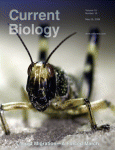
Spatial regulation of nanos is required for its function in dendrite morphogenesis.
Type
Spatial control of mRNA translation can generate cellular asymmetries and functional specialization of polarized cells like neurons. A requirement for the translational repressor Nanos (Nos) in the Drosophila larval peripheral nervous system (PNS) implicates translational control in dendrite morphogenesis [1]. Nos was first identified by its requirement in the posterior of the early embryo for abdomen formation [2]. Nos synthesis is targeted to the posterior pole of the oocyte and early embryo through translational repression of unlocalized nos mRNA coupled with translational activation of nos mRNA localized at the posterior pole [3, 4]. Abolishment of nos localization prevents abdominal development, whereas translational derepression of unlocalized nos mRNA suppresses head/thorax development, emphasizing the importance of spatial regulation of nos mRNA [3, 5]. Loss and overexpression of Nos affect dendrite branching complexity in class IV dendritic arborization (da) neurons, suggesting that nos also might be regulated in these larval sensory neurons [1]. Here, we show that localization and translational control of nos mRNA are essential for da neuron morphogenesis. RNA-protein interactions that regulate nos translation in the oocyte and early embryo also regulate nos in the PNS. Live imaging of nos mRNA shows that the cis-acting signal responsible for posterior localization in the oocyte/embryo mediates localization to the processes of class IV da neurons but suggests a different transport mechanism. Targeting of nos mRNA to the processes of da neurons may reflect a local requirement for Nos protein in dendritic translational control.

